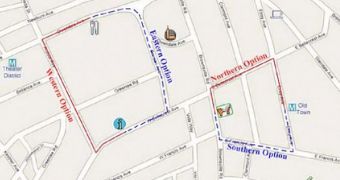The surprising conclusions of a new investigation reveal that people unconsciously tend to favor going south rather than north. When asked to plan a course that involved them getting from one location to the other, they mostly drew south-bound routes, and avoided heading north. This also held true when the distances were exactly the same, the researchers behind the study say. They add that this strange rule of thumb may have something to do with the people believing that going north, as in “up,” is more difficult than heading south, which is most often depicted as “down.”
It would appear that test participants' intuitions told them that going north may be uphill, and therefore more difficult. However, these correlations were not created consciously, and subjects participating in the experiment simply drew out a route the way they best saw fit at the time. What was even more interesting to note was the fact that driving north to south was estimated to be a lot easier and faster than the other way around. This is peculiar, because the researchers always showed test subjects the same two cities.
The selected distance covered 798 miles, and those made to image they were heading south on average estimated the duration of the trip to be 99 minutes shorter. Details of the new investigation appear in the upcoming issue of the esteemed scientific journal Memory & Cognition. The work was authored by Tufts University psychology professor Tad Brunye, who also holds an appointment at the US Army Research, Development, and Engineering Command, in Natick, Massachusetts. “This finding suggests that when people plan to travel across long distances, a ‘north is up’ heuristic might compromise their accuracy in estimating trip durations,” he argues, quoted by Wired.
The expert believes that this concept – of the more difficult north – is embedded into our minds even as children. We learn then that objects placed in higher places are more difficult to reach, and some even unobtainable. Therefore, we associate “up” with “difficult” in our brains. As we look at maps, we then associate “north” with “up.” A simple, logical argument than makes our brain equate “north” with “difficult.” But all of this is very well hidden within our selves, and so finding if you tend to do the same thing when planning routes will require a conscious effort of tracking yourself do that.

 14 DAY TRIAL //
14 DAY TRIAL //